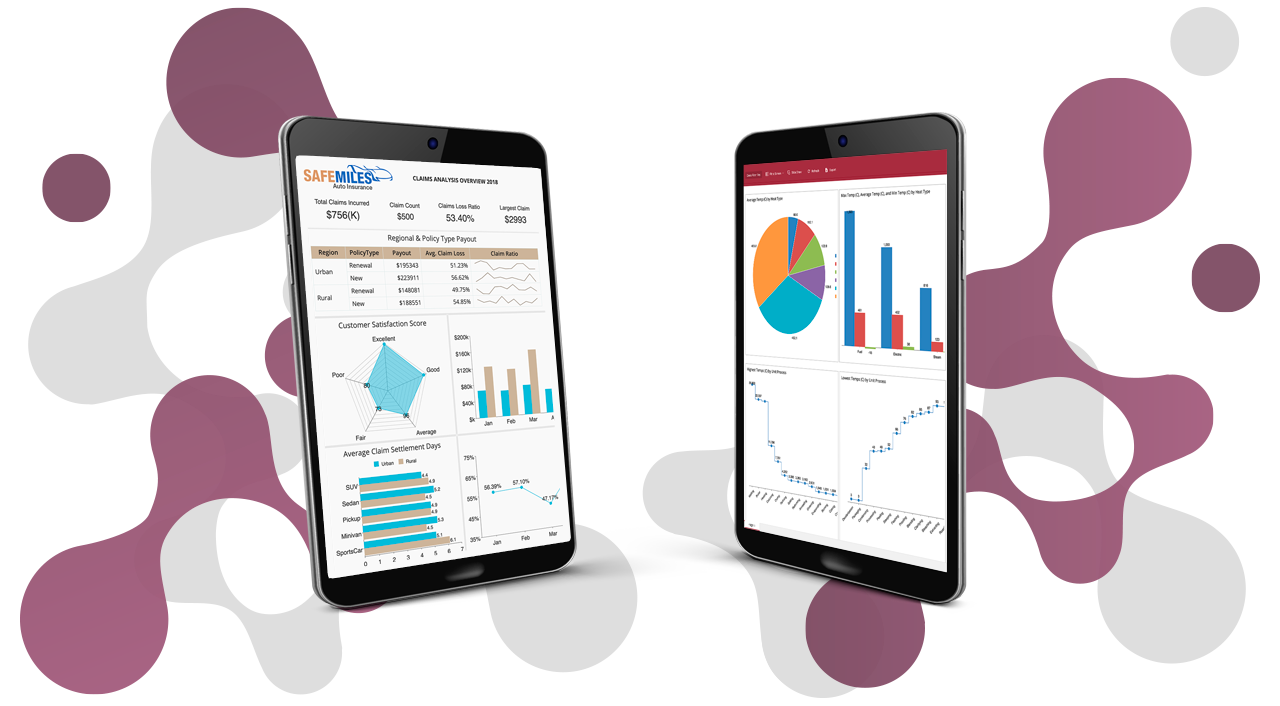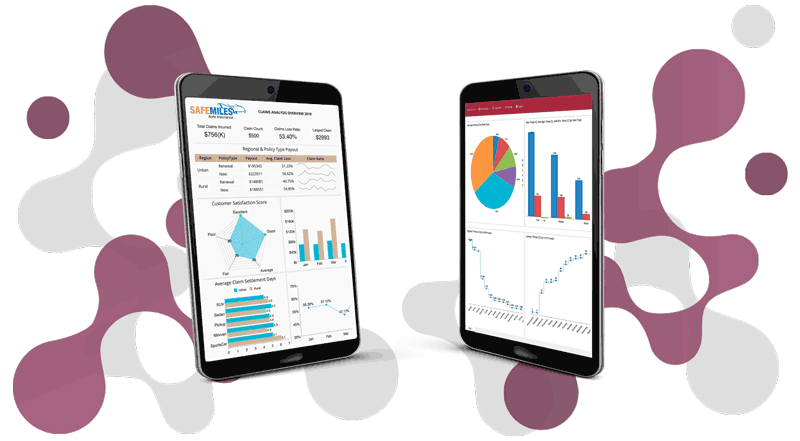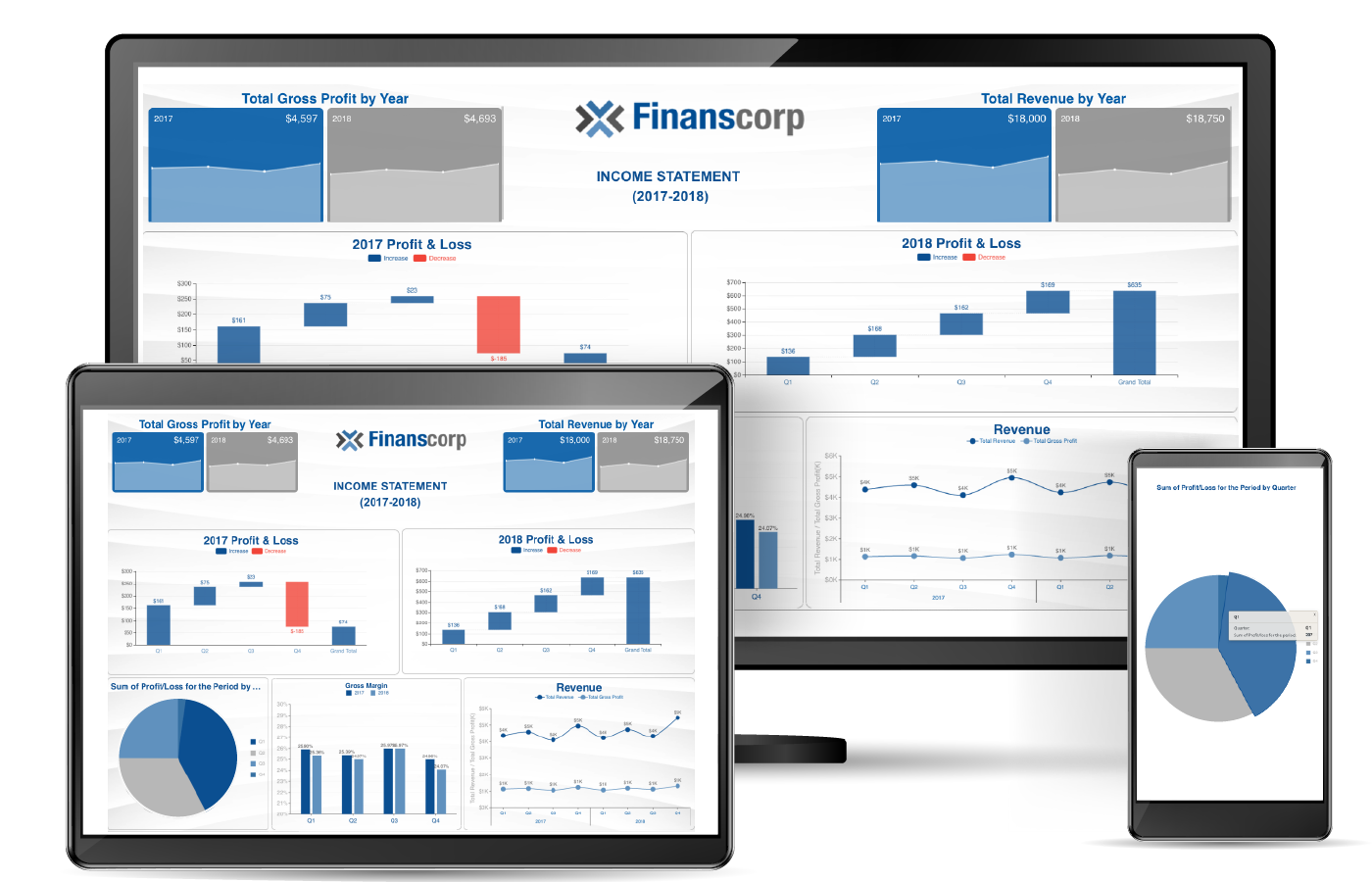Making Embedded BI Easier with Wyn 4.0

Over the years, organizations adopting business intelligence tools have come to realize that business intelligence is most efficient when it is available to the users that make daily business decisions. Whether it is providing field staff with BI tools on their mobile devices, or it is providing actionable KPIs within business applications.
While centralized BI deployments still offer benefits for strategic and collective business decisions, the variety in the data and business applications demand a versatile and flexible platform.
Wyn Enterprise has always been embeddable in web applications across a variety of deployment architectures. With comprehensive APIs and integration touch-points, developers can embed the complete BI experience (or parts of it) from the Wyn Enterprise Server for their end-users.
This includes viewing and designing dashboards and reports as well as working with data sources and exploring data.
With the release of Wyn v4.0, we continue to address use cases for embedded BI. This release addresses the benefits developers can provide to their business users -- to get the actionable insights that matter to them the most.
Keeping the Look and Feel of Embedded BI Consistent
Wyn Enterprise can be embedded into any web application simply by using an iFrame with a URL including a pre-authenticated security token. With this approach, developers can embed the complete Wyn document portal (or parts) within any web page by configuring the source URL dynamically.
A recent post discusses the steps for embedded BI using Wyn Enterprise.
In Wyn Enterprise 4.0, we have added further capabilities to the options available to embed Wyn Enterprise within web applications.
Using iFrame URL to Hide Parts of the Portal

The iFrame approach to embedding the BI capabilities is simple with just a URL that points to Wyn Enterprise and includes options and authentication information to determine what documents are being embedded and viewed.
With the latest release, we've added to the list of options to include:
- Hiding the navigation from the portals
- Hiding the User Avatar from the portals
- Starting the Document Portal at a predetermined category
- Disable actions such as export, copy document, sharing, and more (from the actions available on the portal)
A full list of embedding URL options is available in the documentation.
Custom Portal Themes

While adding functionality is a vital part of embedded BI, it also important for the embedded functionality to look and feel like the host application.
As an enhancement to the white-labeling options available in Wyn, the current version supports custom application themes built using the Wyn Enterprise Theme Designer. With the Theme Designer, you can customize the Wyn Enterprise Portal colors to match the colors of the host application, ensuring a seamless experience for your end-users.
Read more about implementing custom themes to white-label embedded BI using the Theme Designer.
Modifying the Login Page
In most cases, when you are embedding BI functionality in a web application, you will opt for a single-sign-on experience supported by Wyn Enterprise. However, in the cases where the authenticated session expires or needs re-authentication, you want the Wyn Enterprise built-in login page to look like a part of the overall application.
With the latest capabilities in the UI settings of the Admin Portal, you can modify the CSS that is used by the Wyn Enterprise login page to make it look and feel like part of the host application.

This works for those use cases where the need is for a centralized Enterprise BI platform with an independent corporate branded login page as well. The CSS extensibility allows the login for your BI Portal to be completely customizable.
Self-Service Data Access in a Data Governance Environment
As you embed BI into your application, a balance between the data access available to the audience is essential. This ranges from working with fixed datasets that the end-users can explore and visualize to self-service data exploration providing a structured and governed set of access rules for a data source.
Both approaches (and a hybrid balanced approach) are all supported in Wyn Enterprise.
Integrating Datasource and Dataset Designers
In a self-service data access environment, data-savvy end-users have specific requirements. Users need to be able to work with the data sources, and datasets within the business intelligence toolset to analyze the data, merge data from disparate sources, to get to the trends and insights.

Earlier in this article, we talked about the iFrame approach to embedding business intelligence into your application. With this approach in Wyn Enterprise, you can embed the data source, Semantic Models, and dataset designers directly into your application.
This will be utilized with the data-savvy end-users; however, you still need to control the amount of access and authorization users have.
The security configurations and extensibility built into Wyn Enterprise ensures end-user data governance.
You can govern data that a user has access to as well as how they can analyze the data.
Controlling the Functionality Available to Users
Another critical element of functionality is the ability to control actions available for the end-users.
Like the previous two, this piece also is configurable using the URL options in an iFrame.
Hiding actions from users using URL/Admin Portal
To comply with regulatory and data privacy needs, you need to limit what the users can see (and have access to) as well as what they can do with it that information.
For example, GDPR regulations control the export and storage of customer data regulating how the data should be stored and accessed for authorized users.
In some secure environments, export to portable file formats like PDF, Doc, Excel, etc. is not permitted at all.
To ensure you can control the actions available to users as they use the embedded BI platform, you can use the \"hideActions\" options available with the URL specified as part of the iFrame.
Some of the actions that are hide-able using this option include:
- Hiding Global Search
- Hiding the Logout and Avatar actions
- Hiding Favorites
- Hiding the document management actions like revisions, report templates, category assignment, rename, opening in a new window, and more
- Hiding copy, delete, export, preview, and other document actions
For a full list of actions that can be hidden or disabled please visit the documentation page.

We have seen that with some embedded scenarios, it is not \"secure\" enough to use the embedded iFrame URL to control these actions. For those scenarios, you can also control these actions by hiding or disabling them at the system-wide level, using the same options in the Admin Portal. Since the system administrator configures this, it is system-wide and more secure than using a URL.
User Preferences and User Profiles

Some user preferences (and information) need to be configurable with choices available to the end-user. The user profile and preferences are available from the user avatar menu.
This is a functionality managed by the administrator who can determine what aspects of a user profile are visible and modifiable by the end-user. With this, a user can set their language, user profile information, etc. and self-manage their user account, right within the portal itself.
Wyn Enterprise v4.0
Wyn Enterprise v4.0 further enhances integration and embeddable BI capabilities. It offers developers and IT teams the ability to control the look and feel in a white-label capable document portal. The platform also offers capabilities to govern the data access and analysis tools available (as well as document management functionality for dashboards and reports) for both technical and non-technical users.
Understand the Story Behind Your Data
Wyn is a web-based BI and data analytics platform that provides greater insight into your data.
Wyn offers built-in tools for report and dashboard creation, data governance, security integration, embedded BI, automated document distribution, and a business-user-friendly interface for self-service business intelligence.































